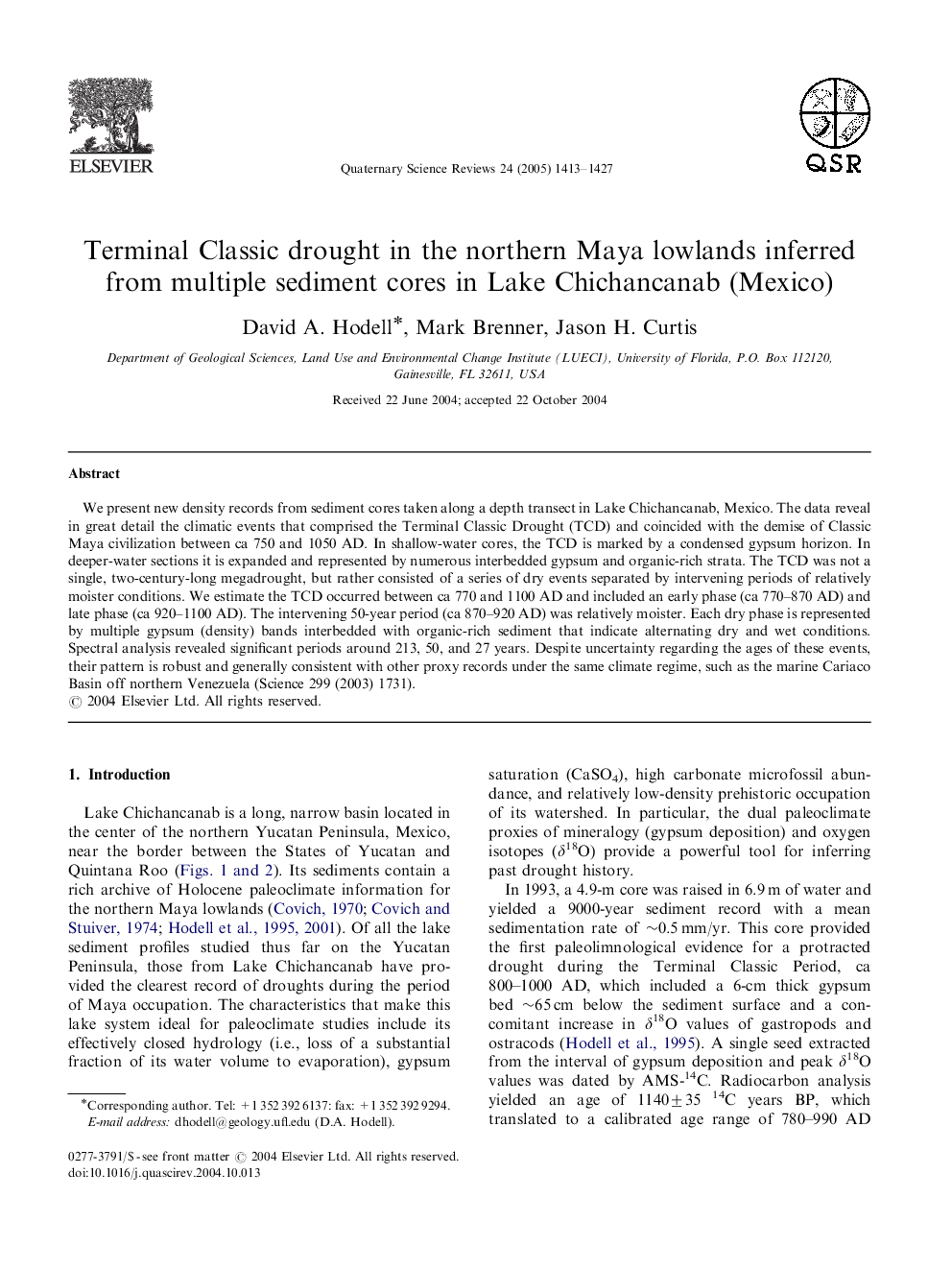| Article ID | Journal | Published Year | Pages | File Type |
|---|---|---|---|---|
| 9536765 | Quaternary Science Reviews | 2005 | 15 Pages |
Abstract
We present new density records from sediment cores taken along a depth transect in Lake Chichancanab, Mexico. The data reveal in great detail the climatic events that comprised the Terminal Classic Drought (TCD) and coincided with the demise of Classic Maya civilization between ca 750 and 1050 AD. In shallow-water cores, the TCD is marked by a condensed gypsum horizon. In deeper-water sections it is expanded and represented by numerous interbedded gypsum and organic-rich strata. The TCD was not a single, two-century-long megadrought, but rather consisted of a series of dry events separated by intervening periods of relatively moister conditions. We estimate the TCD occurred between ca 770 and 1100 AD and included an early phase (ca 770-870 AD) and late phase (ca 920-1100 AD). The intervening 50-year period (ca 870-920 AD) was relatively moister. Each dry phase is represented by multiple gypsum (density) bands interbedded with organic-rich sediment that indicate alternating dry and wet conditions. Spectral analysis revealed significant periods around 213, 50, and 27 years. Despite uncertainty regarding the ages of these events, their pattern is robust and generally consistent with other proxy records under the same climate regime, such as the marine Cariaco Basin off northern Venezuela (Science 299 (2003) 1731).
Related Topics
Physical Sciences and Engineering
Earth and Planetary Sciences
Geology
Authors
David A. Hodell, Mark Brenner, Jason H. Curtis,
